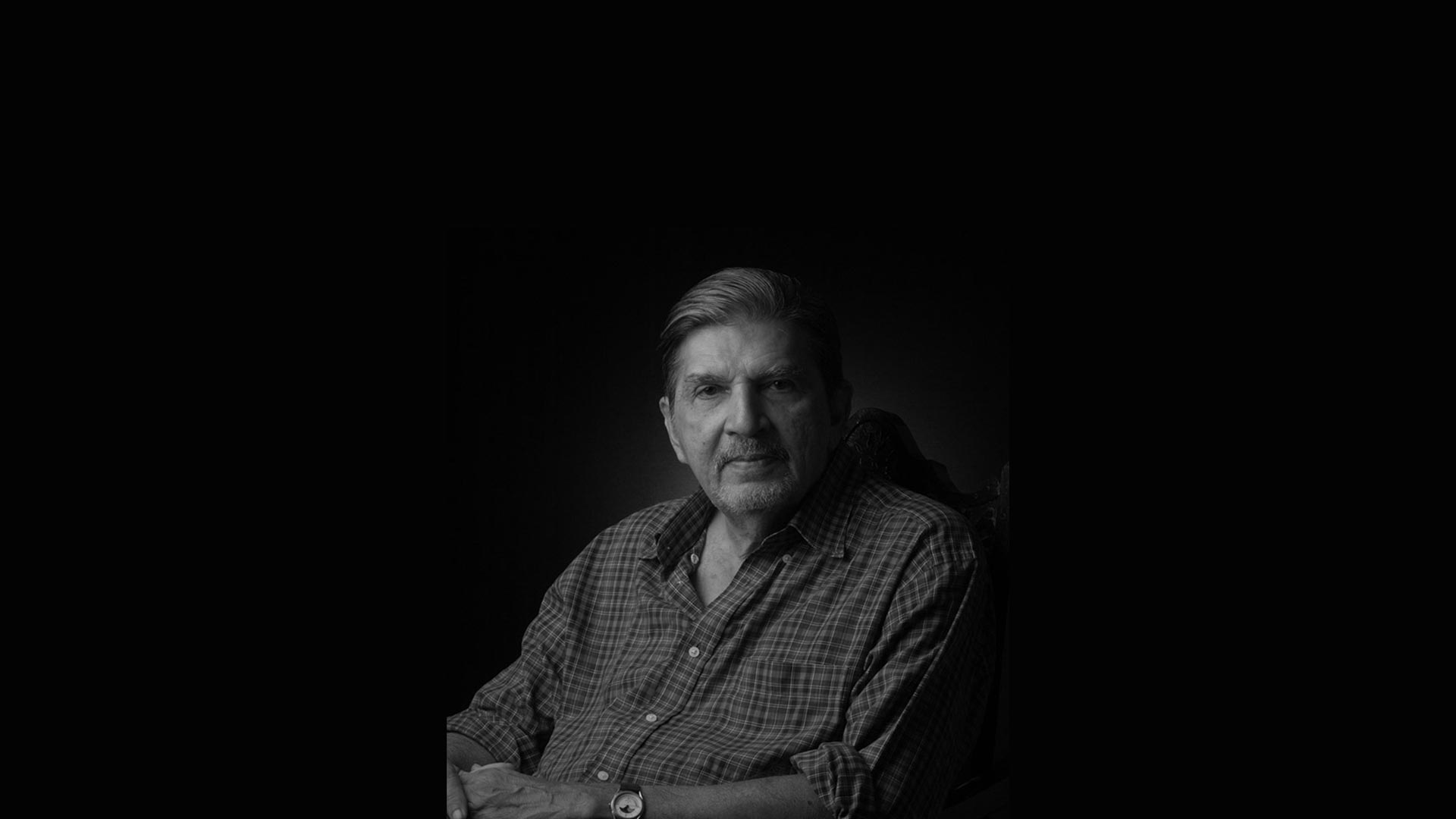Story of Mário, the Miranda (Part 6/6)
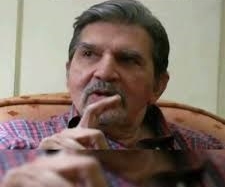
Legacy
Money, power and fame meant little to Mário; he felt humbled by recognition coming his way. The Indian Government conferred two civilian honours upon him: the Padma Shri in 1988 and the Padma Bhushan in 2002. In 2007, he received the Goa State Cultural Award. In 2009, King Juan Carlos bestowed on him the Cross of the Order of Isabel the Catholic, Spain’s highest civilian honour; and Portugal knighted him as Commander of the Order of Prince Henry.
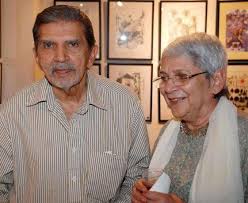
Despite his celebrity status Mário was a self-effacing person. Crafting a lighter finale to his twilight years, he returned to his watercolours and his piano. His sister Fátima notes that in his attempts at nature drawing, the dominant colour was a light grey, resembling clouds, interspersed with spots of light pink.[88] But he gave it up when he fell victim to Parkinson’s – stopping short of that one brushstroke that might create a blob and spoil the painting!
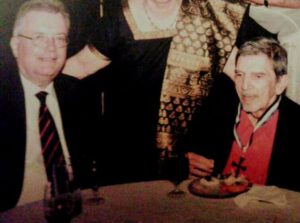
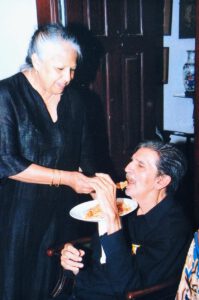
Although a little dispirited, Mário ploughed on. He rarely missed a music show or dining out; a sporadic religious event at home or a chance meeting with an old acquaintance could easily moisten his eyes. He kept in touch with old friends and new, remaining his shy and wry self to the very end.
The sad finish came but gently, in his sleep, on 11th December 2011. His earthly journey concluded with a requiem mass at the parish church of the Saviour of the World, Loutulim. He was cremated in Margão and his ashes strewn over the Zuari at Rachol.
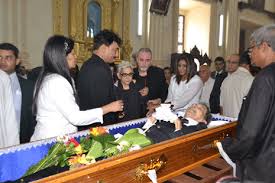
Tributes kept pouring in. In 2012, Mário was awarded the Padma Vibhushan, India’s second highest civilian award. On his 90th birth anniversary, Bombay named a road junction after him and Google featured a doodle showcasing a typical Bombay neighbourhood scene in the rains. In 2017, when Portuguese Prime Minister António Costa visited Goa, the country’s Medal of Cultural Merit was handed to Habiba (d. 2021). This year, Jazz Goa is due to celebrate ‘World Goa Day’ with Mário’s iconic cartoons coming to life in song.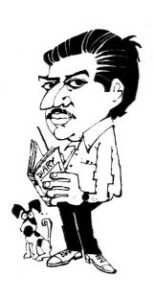
Mário was a man of few words; but no words will suffice to describe his ‘glocal’ art. Luckily, his creations speak for him; they are amusing, magical, even therapeutic, so to say, and of perennial relevance. ‘Whether he has drawn priest, poet, or peasant, he has revealed the innate Goanness in each. Behind every creation of his there lies a hidden, mysterious, delicious, and sometimes malicious humour,’[89] writes Vamona Navelcar. And, of course, beyond the Goanness lies the humaneness of a man who thought locally, acted globally.
Mário is undoubtedly Miranda, the highly regarded one: ‘Your name from hence immortal life shall have.’ In addition to efforts put in by private institutions in Goa,[90] a permanent State-sponsored set-up[91] is important, to ensure that Mário lives into the next generation. Goa owes it to the man whose work, according to José Pereira, is ‘the most accomplished interpretation yet’[92] of the Goan ethos. His was a popular and powerful presentation to a global audience. Many still travel from far and wide in quest of Mário’s Goa; all being well, they will always find both Mário and Goa!
Acknowledgements: (1) I am indebted to Fátima Miranda Figueiredo for her knowledge and patience translated into many hours of whatsapp chats about her brother Mário and the family; and to Raul and Rishaad de Miranda for their warm welcome and lively conversation. (2) Banner picture: Portrait Atelier Goa (3) Article first published in Revista da Casa de Goa, Lisbon, Series II, No. 12, Sep-Oct 2021
[88] As told by Fátima Miranda Figueiredo, 22.5.2021.
[89] ‘The Flowering of Goan Art’, by Vamona Ananta Sinai Navelcar, in Goa: Aparanta – Land Beyond the End, ed. Victor Rangel-Ribeiro (Vasco da Gama: Goa Publications Pvt Ltd, 2008), p. 126.
[90] Private initiatives by Mário Gallery, Azulejos de Goa, Velha Goa and Sunaparanta Centre for the Arts.
[91] Note the fiasco at Reis Magos Gallery, cf. https://www.heraldgoa.in/Cafe/Brushing-aside-Mario-Miranda%E2%80%99s-works-at-Reis-Magos-Fort/123554 Retrieved on 22 Aug 2021
[92] ‘Foreword’, by José Pereira, in Goa with Love (Goa: Goa Tours, 1982), p. 4.
Story of Mário, the Miranda (Part 5/6)
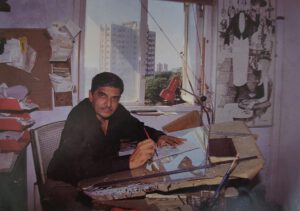
Reinventing himself
By his fiftieth year, Mário had developed an abiding interest in illustrating books. After Ruskin Bond’s The Room on the Roof, Uma Anand’s books for children,[69] and several business publications; Dom Moraes’ The Open Eyes: a Journey through Karnataka and A Family in Goa (1976); Manohar Malgonkar’s Inside Goa (1983), Lambert Mascarenhas’ In the Womb of Saudade (1994) and Mário Cabral e Sá’s Legends of Goa (1998) confirmed him in the art of book illustration.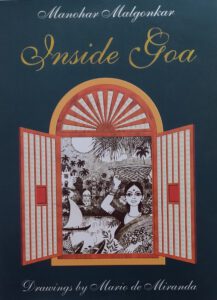
Now practically at the end of his career, doing illustrations for a book in Portuguese – Momentos do meu Passado (2002), by Fernando de Noronha – ‘brought back nostalgic memories of my youth spent in Goa,’ Mário said.[70] Victor Rangel-Ribeiro for his part recalls that when he proposed to the publishers that Mário be the illustrator for Loving Ayesha (2003), ‘first they said he would never agree; and when he agreed, they said he would be late with the drawings. He surprised us all by delivering the drawings on schedule.’[71]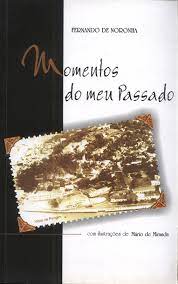
Interestingly, Goa-based projects marked the beginning of Mário’s homeward journey. In 1979, the movie buff of yesteryear acted as a creative assistant for Sea Wolves, a war film shot in Goa. In 1985, Shyam Benegal’s film Trikaal based itself on snippets of the Miranda family history; it was shot in their heritage home and village, the film director deeply appreciative of India’s Latin character available only on its west coast.[72] The mansion, refurbished for the occasion, soon began to figure in coffee table books and glossy magazines.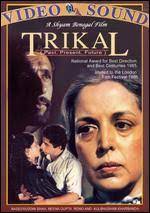
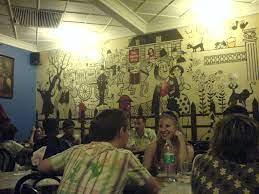
Mário is possibly India’s only cartoonist whose sketches have been turned into murals. His first one came up in 1986, at Hotel Mayfair, in a quaint corner of Panjim. The next two locales were at Colaba: Café Mondegar, his favourite haunt, and Hotel Paradise.[73] Mário also honoured Goa’s Krishnadas Shama Library[74], Panjim’s municipal market complex,[75] and other locations in the country with his murals. The adaptation of Mário’s characters by Air India and by the Charles Correa-designed Kala Academy in Goa was yet another feather in his cap.[76]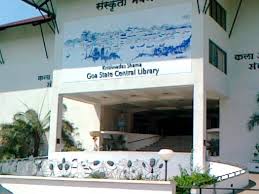
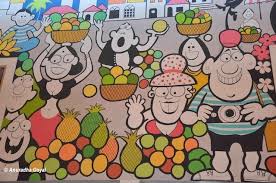
In 1996, the Mirandas gave up their rented place at 7A, Oyster Apartments, Navy Colony, Colaba, and returned with their dogs, turtles, parrot and all to the same sleepy little village of Loutulim that was frozen in time almost just as Mário had left it half a century earlier. The homecoming far from ended his love story with Bombay, though; he continued infusing The Afternoon and The Economic Times with his brand of humour. And in the evening of his life the inveterate cartoonist was a welcome presence in Goa’s social and cultural circles as well.
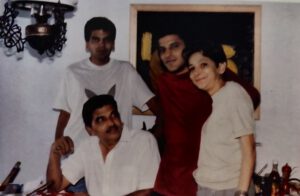
The Goan Cause
Life had come full circle for Mário. ‘What I enjoy most is doing nothing, if I could… – back to the sossegado times!’ he said.[77] Yet he was always brimming with ideas; and even if a wee bit mystified by Goa’s half-hearted response to his work,[78] or so he thought, the quintessential Goan gentleman had many dreams to fulfil and promises to keep.
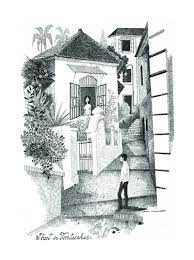
‘Goa has a different atmosphere from the rest of India. After all, Goa was with the Portuguese for 500 years…,’[79] said Mário. He planned to do a series of drawings ‘on my Goa, the Goa that I grew in, the past; the Goa which lots of people did not know existed.’ Considering it critically endangered, he wished to preserve it in his own way.[80] ‘Today, Goa is part of India, so naturally we will lose a lot and gain a lot,’ he said, hoping at the same time that ‘some of the heritage of the past remains and gives Goa this identity that I think it needs.’[81] According to art critic Ranjit Hoskote, Mário’s confluential, Indic and Iberian heritage, ‘gives him an amplitude of cultural references [and] a historically informed sensibility.’[82]
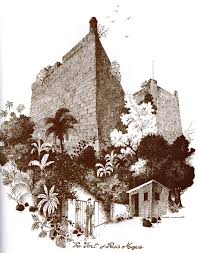
As the convenor of the Goa chapter of INTACH (Indian National Trust for Art and Cultural Heritage), Mário was instrumental in getting the Gulbenkian Foundation to sponsor the establishment of a Museum of Christian Art at the Seminary of Rachol. He also secured funding from Lady Hamlyn Trust, London, for the restoration of the iconic Reis Magos Fort.[83] And even though daunted by politics and red tape, he lent his expertise to public institutions like Goa University, Kala Academy and Goa International Centre.[84] It is ironic that the consummate Goan artist who could make light of just any situation found little reason to smile when it came to the State handling of tourism, environment, animal welfare and heritage issues.[85]
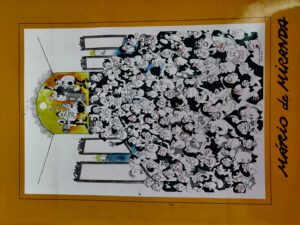
Meanwhile, Mário encouraged fashion designer Wendell Rodricks to document the Goan costume, through the Moda Goa project;[86] and artist Victor Hugo Gomes to study Goa’s ethnography,[87] an experiment that led to the creation of the Goa Chitra Museum. As regards his own oeuvre, Mário was fortunate to see part of it documented in a large-sized book titled Mário de Miranda as well as displayed at Mário Gallery, by architect Gerard da Cunha.
Acknowledgements: (1) I am indebted to Fátima Miranda Figueiredo for her knowledge and patience translated into many hours of whatsapp chats about her brother Mário and the family; and to Raul and Rishaad de Miranda for their warm welcome and lively conversation. (2) Banner picture: Portrait Atelier Goa (3) Article first published in Revista da Casa de Goa, Lisbon, Series II, No. 12, Sep-Oct 2021
[69] The Room on the Roof was first serialised in the Weekly, in 1956; and Anand’s Dul-Dul, The Magic Clay Horse, The Adventures of Pilla the Pup, and Lumbdoom, The Long-Tailed Langoor) were published in the 1960s. Mário also worked on films for children, sometimes for free, Cf. Conversation with Shri Mario Miranda – 2 (Outtakes), op .cit.
[70] Mário’s statement to my father. Cf. Fernando de Noronha, op. cit.
[71] Email of 25.6.2021.
[72] Telephone conversation on 2.7.2021.
[73] https://www.thehindu.com/features/friday-review/art/his-drawings-had-a-special-quality-rk-laxman/article2707166.ece Retrieved on 8 August 2021. Mário chose not to sign the mural, possibly because the artwork was put together by students of J.J. College. Others were done by one Shetty, cf. Conversation with Shri Mario Miranda – 2 (Outtakes), op. cit.
[74] Façade mural and interior panels: project executed by Orlando de Noronha’s firm Azulejos de Goa, Panjim, in 2011.
[75] Executed by Panjim-based Rajesh Salgaonkar, 2005.
[76] Some undertaken by Deepak from Meerut, cf. Conversation with Shri Mario Miranda – 2 (Outtakes), op. cit.
[77] ‘Tale of Two Goans’, op. cit.
[78] FTF Mario Miranda, op. cit.
[79] ‘Tale of Two Goans’, op. cit.
[80] Ibid.
[81] Ibid.
[82] Ranjit Hoskote, ‘The Art of Mario Miranda’, in Mário de Miranda, op. cit., p. 81.
[83] In both projects he had the support of Bal Mundkur; Bartand Singh and Smith Baig of INTACH.
[84] Mário was declared Goa Today’s Man of the Year. Cf. interview with Alexandre M. Barbosa and Alister Miranda, in Goa Today, December 1998, pp. 18-23.
[85] Doordarshan National, Eminent Cartoonists of India, #04, op. cit.; Goa Today, ibid.
[86] https://www.firstpost.com/india/moda-goa-designer-wendell-rodricks-on-indias-first-costume-museum-and-his-vision-for-its-future-5510481.html Retrieved on 19 Aug 2021
[87] https://timesofindia.indiatimes.com/city/goa/dont-call-me-sir-call-me-mario/articleshow/11456423.cms Retrieved on 19 Aug 2021
Story of Mário, the Miranda (Part 4/6)
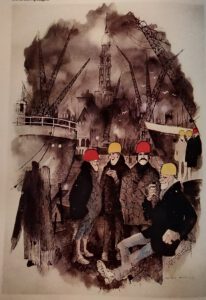
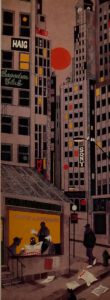
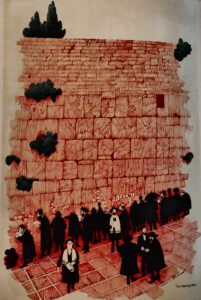
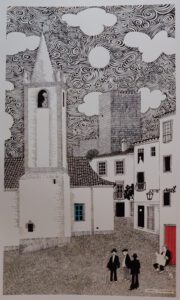
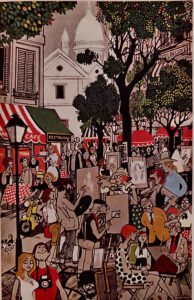
(L-R Dockworkers in Germany; Charley's Corner, NY; the Wailing Wall; a street in Portugal; open-air cafe in Paris)
Compulsive Traveller
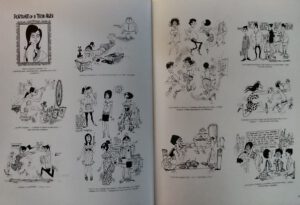
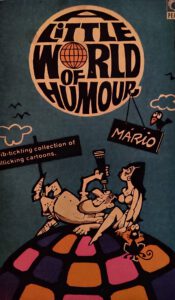 Mário was a persistent seeker of the funny side of life, as A Little World of Humour (1968) and Laugh It Off (1975) make it amply clear. He was never bored, even if stuck at an airport or a railway station; ‘watching people is an experience,’[53] he said. Bombay’s hustle and bustle had brought him face to face with crowds all right, but he only loved watching them, not being in them![54] He enjoyed walking around, be it in the village or the city; to him, walks were ‘life’s mini-journeys that could be turned into a movie’, says Rishaad.[55]
Mário was a persistent seeker of the funny side of life, as A Little World of Humour (1968) and Laugh It Off (1975) make it amply clear. He was never bored, even if stuck at an airport or a railway station; ‘watching people is an experience,’[53] he said. Bombay’s hustle and bustle had brought him face to face with crowds all right, but he only loved watching them, not being in them![54] He enjoyed walking around, be it in the village or the city; to him, walks were ‘life’s mini-journeys that could be turned into a movie’, says Rishaad.[55]
Mário drew from observation, from life, prompting Nissim Ezekiel to remark: ‘No escape if Mario is looking at you.’[56] In his illustrations always teeming with human specimens, each had their own story to tell. However, sometime later, began cherishing moments away from the madding crowd, say, by slipping into the anonymity of a movie hall.[57] Was it plain overload or a midlife crisis that had suddenly brought on the feeling that ‘life is not funny as all that’[58]?
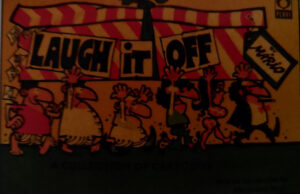
Fortunately, there was an upside to the behaviour change. Mário got less and less interested in cartooning and more and more excited about capturing moods and ambiences for his pictorial travelogues.[59] He made no bones about his travel mania – ‘especially if someone else is footing the bill!’ as he would say in jest.[60]
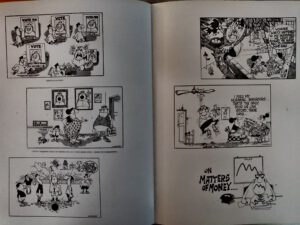
In 1979, a year after a major trip to Germany, he quit the influential Times Group and joined a fledgling tabloid, Midday, under Contractor’s editorship. From 1985 onwards, he was a freelancer with the same editor’s The Afternoon Despatch & Courier: not only did his cartoons gel with Busybee’s humour, the paper’s relaxed pace permitted him and wife to travel and draw at will. Sometimes, Habiba and the sons joined him on cross-country jaunts, which were truly memorable, says Raul.
Mário’s wanderlust brought forth the sublime artistry of his pencil and brush, ink and paper – fascinating enough to fill a book. Generally, after he had spotted his themes, his pen would scribble just a few hasty lines, later turning them into finely detailed and nuanced sketches, thanks to the artist’s photographic memory for faces and buildings[61] (he especially loved old people and ruins). Mário’s traditional line art had by now got stylised into neat, black ink pen illustrations, sporting straight graphite lines with flat cross-hatching for tonal variations.[62] Mário said, ‘If you see my early work and compare it, you’ll see I always enjoy experimenting.’[63]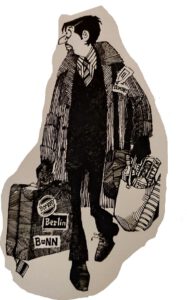
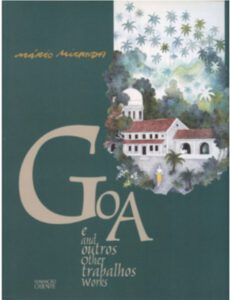 Over a span of three decades, Mário put up more than thirty solo exhibitions across the country[64] and the world.[65] Vinod Mehta saw no contemporary illustrator or cartoonist in India coming close to Mário’s command over the grammar of drawing; the alleged ‘lack of venom’ in his repertoire spoke for his ‘objective perspective’.[66] In the year 2000, Fundação Oriente in collaboration with the Indian Council for Cultural Relations organised a Mário retrospective titled Goa and Other Works[67], honouring the man who for years had served as a cultural link between Portugal and India (Figure 4).[68]
Over a span of three decades, Mário put up more than thirty solo exhibitions across the country[64] and the world.[65] Vinod Mehta saw no contemporary illustrator or cartoonist in India coming close to Mário’s command over the grammar of drawing; the alleged ‘lack of venom’ in his repertoire spoke for his ‘objective perspective’.[66] In the year 2000, Fundação Oriente in collaboration with the Indian Council for Cultural Relations organised a Mário retrospective titled Goa and Other Works[67], honouring the man who for years had served as a cultural link between Portugal and India (Figure 4).[68]
Acknowledgements: (1) I am indebted to Fátima Miranda Figueiredo for her knowledge and patience translated into many hours of whatsapp chats about her brother Mário and the family; and to Raul and Rishaad de Miranda for their warm welcome and lively conversation. (2) Banner picture: Portrait Atelier Goa (3) Article first published in Revista da Casa de Goa, Lisbon, Series II, No. 12, Sep-Oct 2021
[53] FTF Mario Miranda, op. cit.
[54] ‘The Last Interview’, op. cit.
[55] Personal interview, 9.7.2021.
[56] Ibid.
[57] Pritish Nandy, https://economictimes.indiatimes.com/mario-miranda-the-man-who-made-miss-fonseca-famous/articleshow/11075146.cms
[58] Conversation with Shri Mario Miranda – 3 (Outtakes), 26.6.1991, op. cit.
[59] Germany in Wintertime (1980); Impressions of Paris (1985); Desenhos e Aguarelas (1987); Spain (2007), et al.
[60] ‘Tale of Two Goans’, op. cit.
[61] ‘The Last Interview’, op. cit.; for Mário sketching in loco, cf. Conversation with Shri Mario Miranda – 1 (Outtakes), https://www.youtube.com/watch?v=UBTrDEU9gEQ
[62] ‘The Last Interview’, op. cit.; for Mário at work in Bassein cf. Conversation with Shri Mario Miranda – 2 (Outtakes), op. cit..
[63] ‘Tale of Two Goans’, op. cit.
[64] His first countrywide tour, ‘American Sketchbook’ (1975), included Panjim, Calcutta, Madras and New Delhi.
[65] In Paris, New York, Lisbon, East Berlin, Singapore, Muscat, Jerusalem and Macau, among others.
[66] Vinod Mehta, ‘Tomorrow is another day’, in Mário de Miranda, op. cit., p. 140.
[67] [Lisboa]: Fundação Oriente, 2000.
[68] Mário was the local coordinator of Fadista Amália Rodrigues’ visit to Goa, in 1990, sponsored by Fundação Oriente, as a prelude to setting up office in Goa. Also cf. ‘From Lisbon with Love’, by Mário, in Goa Today, February 2001, pp. 18-19, describing his exhibition and stay in Portugal in the year 2000.
Story of Mário, the Miranda (Part 3/6)
Welcome Break
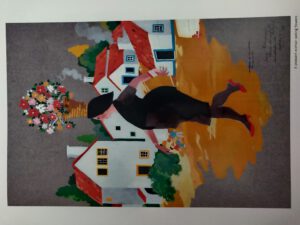
Mário’s diaries were sacrificed on the altar of newspaper cartooning. In 1959, the caricaturist flew to Lisbon on a Fundação Calouste Gulbenkian scholarship.[28] He toured the length and breadth of Portugal, distilling the essence of the Portuguese soul into his sketches and drawings. The experience brought a fresh perspective to his profession:[29] it whetted his appetite for travel and charted a path that would reveal itself with time.
It is unlikely that Mário would go out of his way to confer with the Portuguese cartoonists reeling under an authoritarian regime at the time. In London, later that year, he met with Ronald Giles, Raymond Jackson (Jak), Victor Weisz (Vicky), and memorably bumped into his all-time favourite Ronald Searle at a pub on Fleet Street! He was happy to do cartoons for the classic humour magazine Lilliput and for ITV, but featuring in Punch, the flag-bearer of humour magazines, really was the icing on the cake.
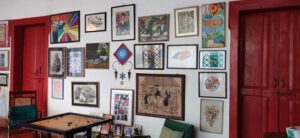
Mário’s passage to England was a turning point in his career. He earned money and friends; more importantly, Searle’s injunction – ‘Stay on in England, but stop copying me!’[30] – infused him with the confidence to go it alone. But then again, the dramatic regime change in Goa, on 19 December 1961, made him turn on his heels. He returned to Bombay on an Indian passport and rejoined the Times Group; but this time around, R. K. Laxman, the reigning deity of The Times of India, ‘subtly ensured that the pedestal was not for sharing,’ says journalist Bachi Karkaria.[31]
Appreciating the steady stream of cartoons that Mário had sent home while on his working holiday abroad, Bombay’s Cocktail magazine commented: ‘Mario is so well known that it’s difficult to say things about him that will not be superfluous. A man who can draw and depict the funniest in the most convincing manner, his Shammu has won the laughing interest of everyone. Every cartoon of his is a refreshing experience. He lampoons the frailties, foibles and social shortcomings of us all. His hilarious work is packed with characters from the contemporary scene and his greatest gift is that he makes us laugh at ourselves. His illustrations too have polished perfection and have been such a success that all our writers want Mario to illustrate their work.’[32]
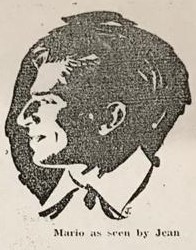
In Mário’s absence, Jean de Lemos, an artist born in the Nilgiri heights, handled the bulk of illustration; they had a soft spot for each other and even exchanged sketches (Figure 3).[33] On his return, though, Jean learnt that Mário was getting engaged to Habiba Hydari,[34 a 24-year-old fine arts student-turned-air hostess whose ‘teenage gang’ had once been part of his circle.[35] Jean exited, but remained friends with Mário’s family.
On 10 November 1963, Mário and Habiba[36] got married in a civil ceremony, and set up home at Rockville. Their children, Raul,[37] a hairstylist, and Rishaad,[38] a designer-decorator, who live in Loutulim, remember their mother as ‘the boss’ and their father as a calm, liberal, and generous man.[39] Mário for his part rued the fact that he was usually too absorbed in his work to resolve pressing domestic issues with a firm hand.[40]
Versatile Artist
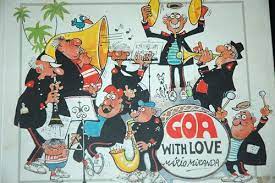
In 1964, Mário brought out a book of sketches, Goa with Love,[41] dedicating it to Habiba. His visibility was on the rise – in school textbooks, corporate calendars, advertisements and trendy magazines. Successive editors of the Weekly[42] held Mário in high esteem; and humourist Behram Contractor (alias Busybee), political commentator Vinod Mehta, poets Dom Moraes and Nissim Ezekiel, and admen Gerson da Cunha, Frank Simões, Bal Mundkur and Alyque Padamsee were among his closest friends. They churned out reams of prose and loads of ad copy; Mário read between the lines and came up with charming visuals.
Mário’s reading, now restricted to periodicals, stood him in good stead.[43] Victor Rangel-Ribeiro believes that the cartoonist’s stays overseas, ‘particularly the long months he spent in London, plus the fact that he was very well read in Portuguese as well as English literature, did give him a broader outlook than one normally found in members of the local press.’[44] But Mário wore none of that on his sleeve; in fact, he abhorred ‘intellectual talk’, his forte being ‘the accumulation of trivia judiciously and harmoniously composed,’[45] as Vinod Mehta puts it.
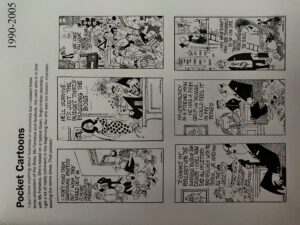
That is evident from Mário’s daily cartoon strips, some of which drew upon people he met in daily life: the archetypal secretary, Miss Fonseca; the Boss and his hapless minion Godbole; the fat, corrupt politician Bundaldass with his sidekick Moonswamy, and the bosomy Bollywood star Rajani Nimbupani.[46] Millions across generations grew up on those cartoon characters that were all the rage; they are now etched in the collective memory, even if the world’s ever-changing sensibilities tend to put a negative spin on some of them.[47]
Nineteen seventy-two was a landmark year: the United States Information Service (USIS) flew Mário to America, and Tel Aviv invited him to stop en route. He met Israeli cartoonists Kariel Gardosh, Shemuel Katz and Friedel Stern; and in the US he interacted with Charles Schulz, creator of Peanuts; Herblock, editorial cartoonist of the Washington Post, Pat Oliphant of the Denver Post, Ed Fisher of The New Yorker and freelancer Al Jaffee. Mad magazine featured him, and back home Mário wrote a piece titled ‘Cartoons – American Style’[48] – a pointer to his writing talent[49] lost in the rough-and-tumble of editorial cartooning.
As India was beginning to see him in a new light, Mário lamented the tendency to seek validation from agencies abroad[50] and wept over his countrymen’s inability to laugh at themselves. He regularly discussed the state of the profession and, Alexyz recalls, he encouraged budding cartoonists. He inspired the formation of the Indian Institute of Cartoonists, Bangalore, and gifted them many of his priceless originals.[51]
Mário was among the handful of cartoonists[52] that ruled the roost in India, but alas, long years of caricature art had left him with little leisure to pursue what he liked best: sketching. The reprinting of Goa with Love in 1982 was thus as much a celebration of the fast-fading world of his youth as it was an evocation of the line art that had grown on him.
Acknowledgements: (1) I am indebted to Fátima Miranda Figueiredo for her knowledge and patience translated into many hours of whatsapp chats about her brother Mário and the family; and to Raul and Rishaad de Miranda for their warm welcome and lively conversation. (2) Banner picture: Portrait Atelier Goa (3) Article first published in Revista da Casa de Goa, Lisbon, Series II, No. 12, Sep-Oct 2021
[28] The scholarship possibly came as a result of Maria Zulema’s letter to Minister Pedro Teotónio Pereiras. Mário lived in a rented room on Rua Actor Isidoro. (Fátima Miranda Figueiredo, 27.6.2021)
[29] Published in Diário Popular, cf. ‘M de Mário’, by Jorge Silva, in Macau, April 1993, II Series, No. 12, pp. 39-43.
[30] ‘The Last Interview’, op. cit.; FTF Mario Miranda, op. cit.; ‘Tale of Two Goans’, op. cit.
[31] https://indianjournalismreview.com/2011/12/12/did-r-k-laxman-subtly-stifle-marios-growth/ Retrieved on 8 August 2021.
[32] Cocktail, January 1960, p. 5.
[33] Mário called her Chips; she called him Popat (Fátima Miranda Figueiredo, 27.5.2021)
[34] Daughter of Iqbal Hydari, a senior executive of the Indian Railways and scion of the nobility of Hyderabad, and Rohaina Mohamedi, a painter.
[35] Mário’s circle included Lúcio Miranda, a third cousin, and Sarto Almeida, both architects. Cf. Manohar Malgonkar, ‘Biography’, in Mário de Miranda, op. cit., p. 17.
[36] He called her ‘Charlie’, and she called him ‘Joseph’.
[37] Married Magen Gilmore, who lives in the US with their daughter Gayle Zulema.
[38] Married to Sabine Frank, who lives with their children, Rafael and Samuel, in Austria.
[39] Personal interview on 9.7.2021.
[40] As told by Fátima Miranda Figueiredo, 27.5.2021.
[41] There are at least three known editions of Goa with Love (1964, Times of India, Bombay; 1982, Goa Tours, Panjim; 2001, by M&M Publications, Reis Magos). In 1964, Mário also brought out ‘Goa Postcards’.
42] Khushwant Singh, M. V. Kamath and Pritish Nandy were the last three editors of the Weekly.
[43] All India Radio, Bengaluru, interviewed by Shylaja Gangooly, 27 Nov 1993. https://www.youtube.com/watch?v=kDDO3N4OVtA
[44] Email of 10.7.2021
[45] Vinod Mehta, ‘Tomorrow is another day’, in Mário de Miranda, op. cit., p. 139.
[46] Conversation with Shri Mario Miranda – 2 (Outtakes), op. cit.
[47] https://timesofindia.indiatimes.com/home/sunday-times/kerala-to-us-cartooning-is-in-the-crosshairs/articleshow/69805457.cms Retrieved on 22 Aug 2021
[48] The Illustrated Weekly of India, 2 January 1974.
[49] Mário liked to write (B. Contractor and K. Singh encouraged him) but found it ‘a slow and irritating process’, https://www.youtube.com/watch?v=6zJB0u-_akA
[50] FTF Mario Miranda, op. cit.
[51] https://www.deccanherald.com/content/211335/cartoon-gallery-gets-mirandas-priceless.html
[52] K. Shankar Pillai, R. K. Laxman, O. V. Vijayan, Abu Abraham, Rajinder Puri, E. P. Unny.
Story of Mário, the Miranda (Part 2/6)
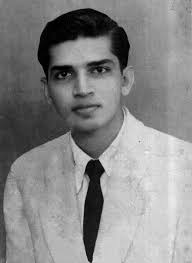 The Artist as a Young Man
The Artist as a Young Man
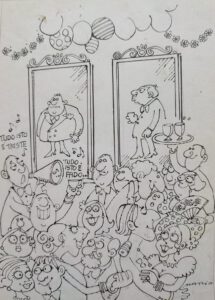
It was during his college days in Bombay that Mário’s characters first strutted out of his diaries; he drew pocket cartoons and peddled them at Flora Fountain for pin money.[11] And at a medical ball held at Clube Vasco da Gama, Panjim, couples dancing the night away delighted in the frisky sketches of the faculty members that Mário kept drawing on the wall mirrors lining the ballroom.[12]
It is not that Mário always passed uncensured. One day, a priest from the village, whom he had depicted outside the local fish market, showed up at his house. Mário’s mother, after doing her best to placate the visitor, ended up going to see archbishop Dom José da Costa Nunes, who had once expressed his wish to meet the young artist. Mário was hesitant but once there, was relieved to see his diaries spark guffaws rather than a controversy. ‘That was the first time I was appreciated by someone I didn’t know,’ he said.[13]
Mário maintained a diary right through his years spent in British India with intermittent stays in Goa and Damão (Figure 2). The last three logbooks (1949-51),[14] now available in print, are a shrine of frolicky pictures of relatives and friends in Loutulim, Panjim and Margão.[15] To quote Nissim Ezekiel, ‘the buffoonery of his human figures is redeemed from grossness by their verve, their inner urge towards going places, getting somewhere. It is not always their fault that there is no place to go, nowhere to get except through the corridors of illusion.’[16]
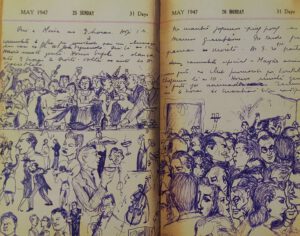
That was Mário’s equivalent of the dark night of the soul! His lifestyle was a cause of concern to his by now widowed mother struggling to manage the household while at the same time providing for Pedro at Princeton University.[17] But then Mário had a change of heart: was it the showcasing of his watercolours and drawings by the 1950 Souvenir of the Bombay-based Loutulenses League[18] that did the trick?
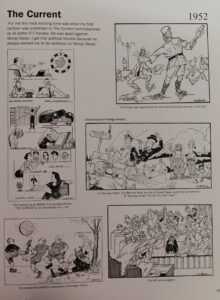
In 1951, seeing a bleak future for himself in Goa, Mário moved to Bombay. Though creative possibilities seemed unlimited here, he was jobless and quite badly off at first. That’s precisely when Policarpo (Polly) Vaz, a fellow hosteller at Rockville,[19] famously suggested to him to hand-craft picture postcards depicting the city monuments, offering to sell them at the hotel where he worked the night shift. Needless to say, the two became fast friends; and they had even thought of migrating to Brazil,[20] when Mário got a call from D. F. Karaka of The Current. The redoubtable editor, riveted by Mário’s diaries, commissioned him to cover a can-can dance scene at the Taj Hotel, and received such a rib-tickler that he promptly took him on as the tabloid’s regular cartoonist.
The young Goan created a stir in Bombay's journalistic circles when his cartoons first appeared in the press. Editor C. R. Mandy and art director Walter Langhammer soon invited him to The Illustrated Weekly of India. Before long, other Times Group publications,[21] too, began to use Mário’s drawings; they skilfully portrayed movement and sound, and often featured the cartoonist’s trademark dog.
Art of Cartooning
That was the year 1952. Mário had virtually stumbled into the profession of cartooning.[22] To an onlooker the job seemed easy, and everything grist to the mill – from the bureaucracy, fashions, business, and people’s habits, to the animal world, environment, music, society, and even politics – but really, finding humour was no mean task. ‘There are times when you don’t feel funny, or may not feel like laughing, but still have to produce a funny cartoon – like a clown who has got to make people laugh all the time, although he doesn’t feel like laughing.’[23]
Elaborating on his predicament, Mário said, ‘People expect me to come up with jokes and anecdotes to make others laugh. I can’t do that. I enjoy humour if it comes from someone else who knows how to tell a good joke…. I am not a naturally funny person; I may look funny, but I am not funny.’[24] And if a cartoonist’s defining quality it is ‘to detect funniness in people’s behaviour or physical features and draw it, it is equally important to be able to laugh with someone, not at someone, without being cruel,’ said Mário, adding: ‘Humour is something very personal, individual. What’s funny to me may not be funny to you. Sometimes I do something which I think is very funny – and it flops! And people asking you to explain a cartoon flattens it completely.’[25]
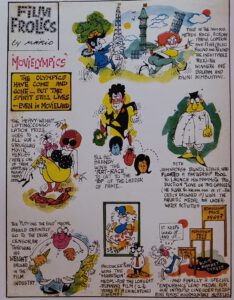
Past the initial scramble for work, Mário began to yearn for the blissful spontaneity of his diary sketching. Add to this the fact that political bigwigs were breathing down his neck, and Mário had a sure recipe for disenchantment. Bombay Presidency’s Home Minister Morarji Desai was among the first ones to let his irritation show – something that taught Mário early on that lampooning political animals involved high risk. When he toned down the humour to appease the readers, cartooning quite paradoxically became a ‘serious business’. ‘Cartoonists are very serious people, and cartoons, no laughing matter,’[26] he quipped.
Finally, Mário stopped pursuing individual politicians; he began to see himself as a social caricaturist more than anything else. He is on record as saying, ‘I am not even a cartoonist; I draw… give me a pen and blank paper and I will draw. I just love to draw.’[27]
Acknowledgements: (1) I am indebted to Fátima Miranda Figueiredo for her knowledge and patience translated into many hours of whatsapp chats about her brother Mário and the family; and to Raul and Rishaad de Miranda for their warm welcome and lively conversation. (2) Banner picture: Portrait Atelier Goa (3) Article first published in Revista da Casa de Goa, Lisbon, Series II, No. 12, Sep-Oct 2021
[11] ‘Tale of Two Goans: Mario Miranda & Wendell Rodricks’, https://www.youtube.com/watch?v=5FDLGApfATc&t=5s
[12] Cf. Fernando de Noronha, Momentos do meu passado (Goa: Third Millennium, 2002), p. 146.
[13] FTF Mario Miranda, op. cit.
[14] Cf. The Life of Mário (1949, 1950, 1951) ed. Gerard da Cunha (Goa: Architecture Autonomous), in 2016, 2012 and 2011, respectively. Fátima Miranda Figueiredo reckons that her brother’s diary sketches total up to about 6,750 over a period of 18 years (1934-1951).
[15] He frequented the houses of his relatives, Judge António Miranda and Captain Adolfo Menezes, in Panjim, and Judge Eurico Santana da Silva, in Margão; and often stayed overnight with friends in their hostels.
[16] Nissim Ezekiel, ‘No escape if Mario is looking at you,’ in Mário de Miranda, ed. Gerard da Cunha (Goa: Architecture Autonomous, 2005), p. 276.
[17] As told by Fátima Miranda Figueiredo, 27.5.2021.
[18] Souvenir of the Silver Jubilee of the Loutulenses League (Goa: Imprensa Nacional do Estado da Índia, 1950). Curiously, in the chapter titled ‘The Rising Generation’, Mário figures as an Arts graduate, not as an Artist.
[19] Polly was from Bastorá; other hostelites, Joe Albuquerque and Paulo Miranda, from Loutulim. Cf. Mário de Miranda, op. cit., p. 14.
[20] Manohar Malgonkar, ‘Biography’, in Mário de Miranda, op. cit., p. 15.
[21] Femina; Filmfare; The Evening News and The Economic Times.
[22] Conversation with Shri Mario Miranda – 2 (Outtakes), op. cit.
[23] FTF Mario Miranda, op. cit.
[24] Ibid.
[25] Ibid.
[26] Ibid.
[27] Manohar Malgonkar, ‘Biography’, in Mário de Miranda, op. cit., p. 24; Conversation with Shri Mario Miranda – 2 (Outtakes), op. cit.
Story of Mário, the Miranda (Part 1/6)
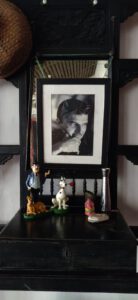
Over the past century and a half, Goa has produced an array of artists.[1] Nearly all of them went to art school in Bombay, joined art movements, and flourished at home or abroad. While recognition of their contribution is long overdue, there is also the curious case of the self-trained artist Mário Carlos do Rosário Brito Miranda (1926-2011), or Mário de Miranda, whom the same fraternity has only grudgingly given credit. He worked in different styles, in different mediums, even across the media; and apparently no frame has been able to encompass his versatility. He was known simply as ‘Mário’, but he was equally Miranda, that is, ‘worthy of admiration’.
Early Life
Mário was born in Damão, to Constâncio do Rosário Miranda[2] and Maria Zulema de Brito.[3] Miranda was a civil administrator in the then Portuguese enclave where he got engaged to pretty Zulema, twenty years his junior. Her family hailed from Assonorá (in north Goa) and was prominent in that town on the Gujarat coast. They married in the groom’s native village, Loutulim (south Goa), in the year 1923, and had their first two children in Damão: Pedro in 1924, and Mário in 1926.
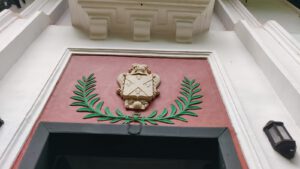
By 1929, the family was back to their splendid manor house that still flaunts a coat-of-arms.[4] Mário wore his heritage lightly but took delight in the old-world ambience marked by wit and humour, music and mirth.[5] He was as much attracted to reading as he was to the piano, sports and pets.[6] But sketching was undoubtedly his first love; so, if not playing records on the wind-up gramophone, he would be doodling Goan celebrities, village bumpkins and animals on the house walls, much to his grandmother’s annoyance. He once said, tongue in cheek: ‘In those days I visualised I would be another Michelangelo… but it didn’t work that way.’[7]
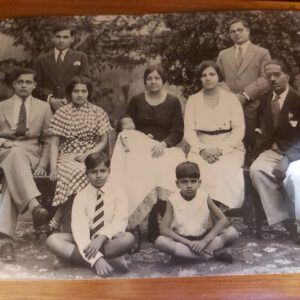
Little Genius
Mário’s mother quick to spot his talent gifted him blank diaries; he feverishly filled them out with bright, breezy colour sketches and a few jottings in Portuguese. They were virtually his confessions; but relatives and friends happily leafed through those pages, which unwittingly froze a microcosm of mid-twentieth-century Goa. In fact, Goan characters so populate his work that one can safely say, ‘Here is Goa’s plenty!’
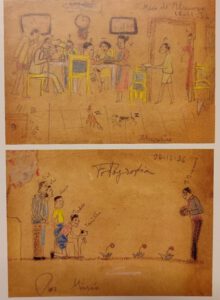
On closer examination, Mário’s chronicles transcend Goa and mirror universal human nature. The little genius notices everything and everyone, and spares none. The serious and the pompous come very especially under his scanner. According to him, ‘when people take themselves too seriously, they tend to be funny.’[8] While his drawings embody that insightful observation, they don’t merely distort a person’s features; they perceptively bring to light things invisible to the naked eye.[9] Thus, more than just ‘Goa’s plenty’, we may say of Mário’s diaries what Dryden has said of Chaucer’s Canterbury Tales: ‘Here is God’s plenty!’
Mário, perhaps one of the world’s youngest visual diarists, was in his final year at St Joseph’s Boys’ High School, Bangalore, in 1942, when his last sibling, Fátima, was born in that garden city. And while his school buddies lapped up his naughty pencil strokes, his mother dreamt lofty dreams. In the following year, she enrolled him at the J. J. School of Art, Bombay, in preparation for the Beaux-Arts de Paris. But the teenager, feeling trapped rather than freed by formal art education, left the school in a day’s time and joined St Xavier’s College instead. He graduated in English Literature in 1949, and briefly considered joining the Indian Civil Services. Not surprisingly, he later said he was better off as a cartoonist than he would have been as a bureaucrat![10]
Acknowledgements: (1) I am indebted to Fátima Miranda Figueiredo for her knowledge and patience translated into many hours of whatsapp chats about her brother Mário and the family; and to Raul and Rishaad de Miranda for their warm welcome and lively conversation. (2) Banner picture: Portrait Atelier Goa (3) Article first published in Revista da Casa de Goa, Lisbon, Series II, No. 12, Sep-Oct 2021
---------------------------------------------------------------------------------------------------------------------------
[1] António Xavier da Trindade (1870-1935), António Piedade da Cruz (1895-1982), Ângelo da Fonseca (1902-1967), Raghuvir Chimulkar (1905-1958), Ângela Trindade (1909-1980), Vasudeo Gaitonde (1924-2011), Francis Newton Souza (1924-2002), Laxman Pai (1926-2021), Vamona Navelcar (1930-), and José Pereira (1931-2015), to name but a few.
2] Constâncio Teodósio do Rosário Miranda (1883-1946) was the son of João Baptista Miranda and Ermelinda Xavier Miranda.
3] Maria Zulema de Brito (1903-1988) was the daughter of Luís Diogo de Brito and Maria Francisca de Melo.
[4] Mário’s great-grandfather Constâncio do Rosário Miranda (Sr.) was granted the coat-of-arms with the title ‘Fidalgo da Casa Real’, for capturing dreaded bandit Custobá Rane, in 1871.
[5] Mário’s father and grandfather were witty gentlemen; his uncle Carlos, later a Supreme Court judge in Portugal, and brother Pedro were artists; and mother Zulema, a pianist. (Fátima Miranda Figueiredo, 23.5.2021)
[6] He was fond of classical literature and music, and played football, volleyball and badminton.
[7] FTF Mario Miranda, 26.4.2003 https://www.youtube.com/watch?v=AvUFUdp20MU
[8] Ibid.; Conversation with Shri Mario Miranda – 2 (Outtakes), https://www.youtube.com/watch?v=wBmMiEqvTy0
[9] FTF Mario Miranda, op. cit.
[10] Doordarshan National, Eminent Cartoonists of India, #04, https://www.youtube.com/watch?v=gkFpyDlQb88
